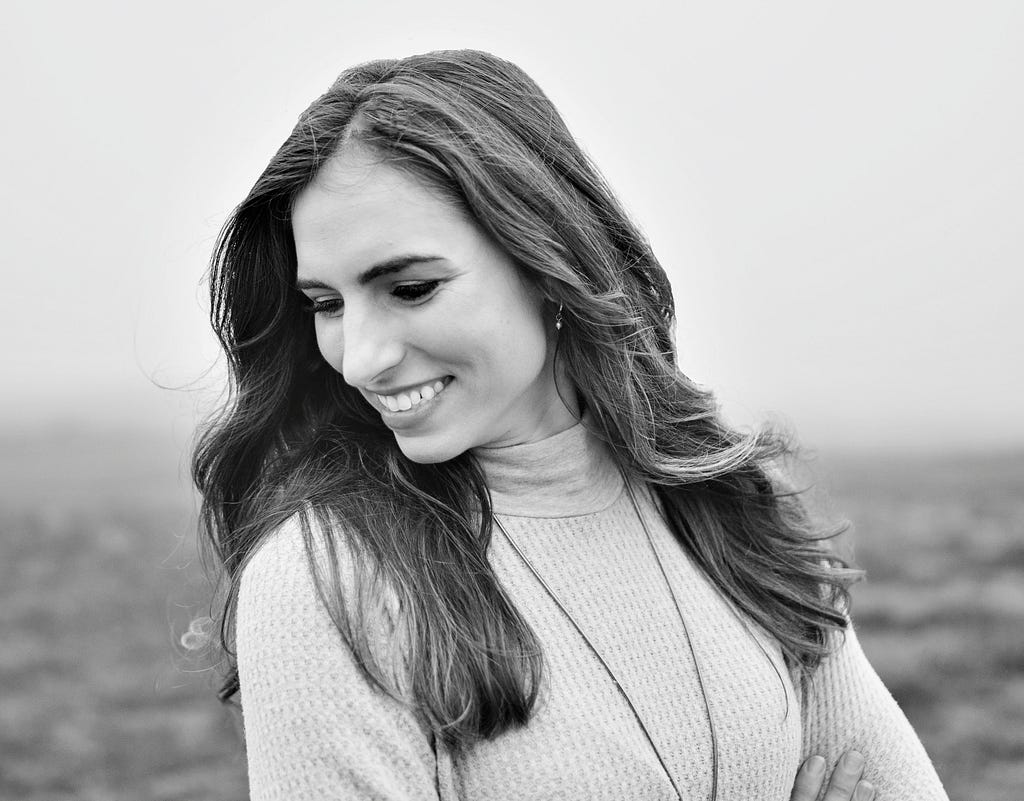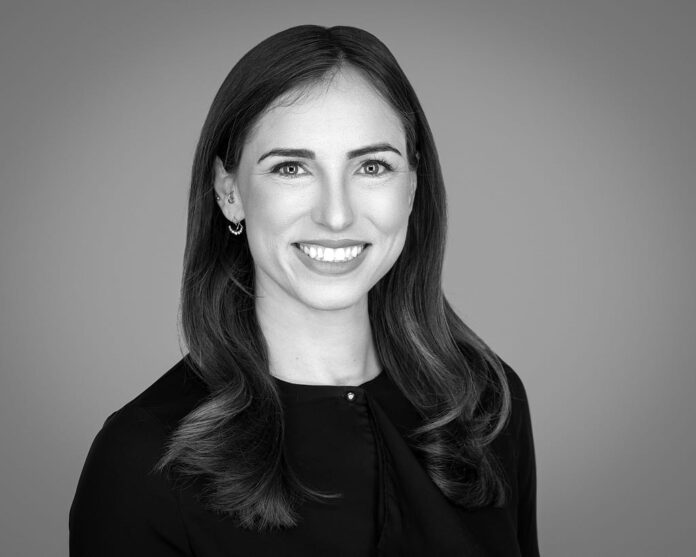Maureen McLaine Of Stantec On Five Things You Need To Create A Highly Successful Career As A Commercial Designer
An Interview With Athalia Monae
Bravery — I was able to move up in the commercial design world by doing the hard things, even when I feared failure. Bravery can be having the hard conversations you would rather avoid and showing up when others don’t. There are things every day that scares me, but the more challenges I face head-on, the easier and less scary challenges become.
As a part of my series about the ‘Five Things You Need To Know To Create A Highly Successful Career As A Commercial Designer,’ I had the pleasure of interviewing Maureen McLaine.
With over 10 years of experience, Maureen McLaine, WELL AP, NCIDQ, RID, is a senior interior designer known for designing and producing multi-family, hospitality and mixed-use projects, particularly high-rise multifamily apartments. In her role, she provides space planning, conceptualization, documentation, coordination with other disciplines, and furniture and art specification. She loves creating spaces that people interact with every day and positively impacting someone’s life through creating their environment.
Thank you for joining us today! Can you share the story of what led you to pursue a career in commercial design?
I always knew I wanted to get into the design industry, so when deciding on a college to attend, I focused on schools where I could pursue both my athletic endeavors and passion for architecture and design. After graduating from Texas A&M University’s College of Architecture with a degree in environmental design, I was drawn to international companies, such as Stantec, working in commercial design worldwide. I’ve been working in the commercial design industry for over a decade now and there is a sense of positively impacting society through beautiful, functional spaces that are used daily.
What’s the most interesting or amusing experience you’ve had in your career so far, and what lesson did you learn from it? The most interesting experience I’ve had in my career so far is the aftermath when a design is done and you get to witness how the community engages with your space. That observation provides quick feedback on “lessons learned” as well. You find out what holds up over time, how the space is being used, and what people gravitate to.
Do you have a favorite life lesson quote? Can you share a story about how it has been relevant in your life?
“How do you stay so positive? I don’t. I accept every emotion I feel without shame or guilt and work through it. I am not one dimensional. I am a trillion parts and I love and accept them all. The goal isn’t positivity, it’s self-acceptance.” — Lisa Wetsel. To me, my favorite quotes change all the time. This one resonates with me now as I work towards being my best self and the roles that it involves — including designer, leader, and spouse. I always try to better myself and my work, and that means looking at the successes as well as the failures and learning from them.
As a successful business leader, which three character traits have been most crucial to your success? Can you share a story or example for each?
- Adaptability — There are always unforeseen circumstances that arise in design and construction and having a plan while maintaining the ability to bend and overcome where needed is key to creating a successful project and vision. It could be market pricing increases you need to accommodate on a job, a material or product no longer being manufactured, or an updated client vision, but when a challenge arises, you will be ready to pivot and be successful.
- Empathy — Quality connections are key to any industry. Positive, supportive relationships with clients, teammates, and consultants keep a project seen as a collective objective with a shared end goal. Many hands create a lighter load, and those hands are likely to continue to help support a cause if they feel appreciated and valued.
- Perseverance — Challenges will arise, and as a leader, it is up to you to get the project and the team to the finish line. The reminder that everything is temporary is a helpful mindset to get through challenging times and overcome what seems impossible.
Can you describe a recent project you completed and what your specific contributions were?
A recent project we completed was Yotel Miami, a new hotel and condominium in Downtown Miami. I was the lead interior designer in charge of space planning and finish and furniture selections. The project recently won a South Florida Business Journal Structures Award for Best Mixed-Use Project.
How do you approach balancing aesthetics and functionality in your designs?
Aesthetics and functionality are both important, but a space must be functional for the long term to be appreciated. To me, aesthetics elevate and enhance the function and it’s not something that competes with function if done properly.
What is your design philosophy when it comes to commercial spaces?
I believe that spaces create different frequencies, and it is up to us to find out what type of environment we are creating and designing accordingly. Some different objectives of a space could be focus, calming, motivating, collaborative, healing, or social. Many of our projects are a mix of various types of functions. Designated spaces, such as fitness areas, conference rooms, or co-working areas, all radiate different energies and need to be designed differently to maximize your intended experience in that space.
Where do you draw your inspiration for your designs?
Each project begins with understanding the local surroundings, who will be using the space, and what it is trying to accomplish. By answering those three questions, you can build a story about the design intent. The design story drives material selections and programming.
What strategies do you use to ensure your designs meet the needs of the end-users?
As a licensed interior designer, our spaces are regularly checked for code compliance and coordinated with the design team and consultants. Throughout the evolution of the design, we work closely with our clients to create a concept and program that meet the needs of the project and end-users. The design is constantly reviewed during design and documentation milestones allowing us to assess if we are still on track and adjust where needed.
How do you approach sustainability in your commercial projects?
There are plenty of ways to be sustainable in our industry. Sustainability addresses ecosystem health as well as human and social health. As an interior designer, I prefer to incorporate biophilic design elements, use materials that meet the standards of the AIA materials pledge and are LEED approved, increase natural daylighting usage where possible, specify low-flow fixtures and Energy Star appliances, and specify humanely sourced products such as furniture.
What impact do you think remote work and digital transformation will have on the design of commercial spaces?
As someone who works mostly remotely, I feel strongly that the design of commercial spaces is still relevant and important. The spaces we are creating, however, must now compete with our individual sanctuaries. We are creating a destination where collaboration, focus, and personalization are important. Meaningful environments must be a priority rather than an afterthought or perk. Prioritizing the well-being of employees is an overall win for the workplace and society.

What are the five things you believe are essential for creating a highly successful career in commercial design? Can you share a story or example for each?
1. Bravery — I was able to move up in the commercial design world by doing the hard things, even when I feared failure. Bravery can be having the hard conversations you would rather avoid and showing up when others don’t. There are things every day that scares me, but the more challenges I face head-on, the easier and less scary challenges become.
2. Humility — Humility allows you to admit when you are wrong or when someone’s idea is better and create better work. Massive commercial projects are not created by one person. They are a team effort, and my best projects have required humility to know my limits and put trust in my team’s strengths, which in turn not only produces great projects but also builds team confidence and ability.
3. Curiosity — The industry is constantly evolving, and to stay up to date and create the most relevant projects, you must be curious about what is new. Whether it is learning new technology, codes, trends, or methods, I found curiosity keeps you evolving and growing.
4. Mastery — To become a master at something, you must be a constant student while at the same time being a mentor. As a successful designer, people rely on my knowledge and trust that I know what I am doing. The only way to gain mastery is consistent practice with the intent to get better.
5. Relationships — I got to where I am because I built quality relationships in the industry and intentionally maintained mutual respect with those around me. There are times when the industry can be tough, so to have a solid support group is crucial. As someone who believes in “the golden rule” as well, I think to be successful, you need to support others in their success just as much as you support yourself in your own growth.
What role do you think commercial design plays in community building and social interaction?
Commercial design plays a huge role in community building and social interaction. We spend most of our waking hours (unless you are working from home) in commercial spaces. People gravitate to great spaces and it is up to the commercial designers to create moments worth spending time in.
Given your influence, if you could inspire a movement to bring the best results and solutions to the greatest number of people, what would it be? You never know what impact your idea might have!
You never know what impact your idea might have! My movement is trying to create more authenticity. In my own life, I try to stay as authentic as possible, which can be hard in the corporate world sometimes. When we are able to truly accept and love ourselves and others, that is when we unlock the power of success, creativity, beauty, and better communities.
How can our readers follow your work online?
https://www.stantec.com/en/people/m/mclaine-maureen
linkedin.com/in/maureen-mclaine
Thank you for your time and excellent insights! We wish you continued success.
About the Interviewer: Athalia Monae is a product creator, published author, entrepreneur, advocate for Feed Our Starving Children, contributing writer for Entrepreneur Media, and founder of Pouches By Alahta.
Maureen McLaine Of Stantec On Five Things You Need To Create A Highly Successful Career As A… was originally published in Authority Magazine on Medium, where people are continuing the conversation by highlighting and responding to this story.


